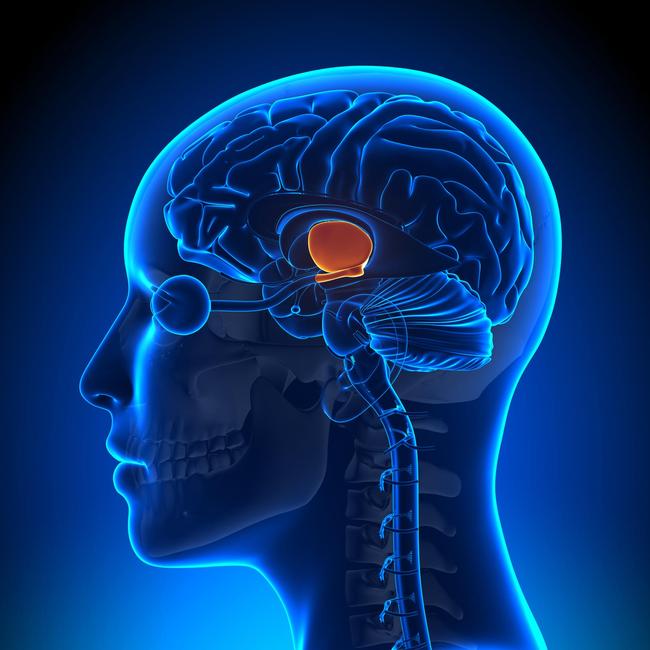Science’s quest to understand appetite control has taken a huge leap forward
Little has been understood about what goes on in the brain’s ‘appetite control centre’. The first cell map of the human hypothalamus, though, is set to supercharge future weight loss drugs.

The quest for more and more effective weight-loss drugs has spawned intense competition among pharmaceutical companies and increased consumer demand. But how do these drugs really work? Despite the impressive success rates, surprisingly little has been understood about what exactly is going on in the part of the brain that responds to the gut hormones the drugs are based on.
That is about to all change as a result of the first “map” of the human hypothalamus that has been published by researchers at Cambridge University.
The hypothalamus is the part of the brain that controls all aspects of homeostasis, from sleep to stress to temperature through to puberty and menopause. It’s also the brain’s appetite control centre and contains receptors for crucial gut hormones such as GLP-1 that are targeted by drugs such as Ozempic and Mounjaro. Mounjaro also targets a second receptor known as gastric inhibitory polypeptide (GIP) which, like GLP-1, is an incretin that stimulates the release of insulin from the pancreas.
The combination of targeting these two receptors instead of one means that Mounjaro’s effectiveness has been rated in clinical trials at 25 per cent, compared with Ozempic which achieves an average 15 per cent weight loss in individuals who take it.
But there are myriad other receptors located in the hypothalamus that play a role in appetite control and energy balance, and the way the neurons within these receptors interact with neighbouring cells and within brain circuits is also likely to be crucial in the development of the future suite of weight loss drugs.
“We now know that targeting the brain is a good way of actually tackling obesity,” says Giles Yeo, a molecular geneticist and professor of neuroscience at Cambridge University.
Professor Yeo was the senior author of the hypothalamus mapping study recently published in the journal Nature. “We are at the moment on the crest of a wave where we have never had as many or as effective or as safe tools with which to treat obesity. But we need to unpick all the pathways and do it carefully,” he says.
Until now, science’s understanding of the human hypothalamus has derived from mouse models. The Cambridge University study carried out with the Max Planck Institute for Metabolism Research in Cologne was the first to examine post-mortem donor human brains using cutting-edge single-cell and spatial transcriptomic technologies to map the human hypothalamus. The researchers analysed tissue from 18 human donors, identifying 433,000 cells and used single-nucleus RNA sequencing to profile the cells’ gene expression. They then used spatial transcriptomics to map expression of genes in nine sections of the hypothalamus to form a “Google map” of the tiny brain region, which allowed scientists to understand the cells’ genetic profiles and explore how they interact with neighbouring cells. The resulting detailed cellular resolution offers invaluable insights into the circuits that regulate appetite and energy balance, as well as other functions such as sleep and stress responses. The images, dubbed the HYPOMAP, have been published open-source and so made available to researchers and drug companies all over the world, providing a fast-track to targeted preclinical studies.
“This is just the beginning,” said Dr John Tadross, consultant pathologist at Addenbrooke’s Hospital and lead author from Cambridge’s Institute of Metabolic Science Metabolic Research Laboratories. “The atlas itself is a milestone, but what could really make a difference for patients is understanding how the hypothalamus changes in people who are overweight or underweight. This could fundamentally shift our approach to metabolic health and enable more personalised therapies.”

So far, science has identified 20 gut hormones. GLP-1 is likely to be the most important of these, but Professor Yeo says the science of appetite control is only just beginning to be understood. The hypothalamus is rich in fat-sensing circuits and gut hormone sensors, and it controls appetite by internally sensing fat levels and energy levels within the body’s blood and tissues. But these appetite circuits are dysregulated in some people, meaning they may feel constantly hungry even if they have eaten recently.
Professor Yeo says if the neuronal sensors and brain pathways involved in appetite regulation are better understood, it may lead to the development of even more effective weight-loss drugs, more personalised drugs and, more importantly, drugs with fewer side effects.
Pharma giant Lily is developing a weight-loss drug that targets three receptors involved in appetite regulation.
“If you target more, there’s the possibility of lowering the dose for each of the individual components to reduce the chances of side effects,” Professor Yeo says.
“To my mind, the goal is not more and more and more weight loss, but better targeted responses to actually have a more consistent response with as little side effects as possible.”





To join the conversation, please log in. Don't have an account? Register
Join the conversation, you are commenting as Logout